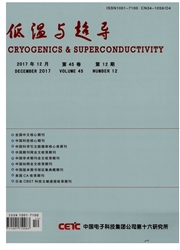

 中文摘要:
中文摘要:
针对目前空调用有机相变蓄冷材料热导率低的问题,将具有高导热性的纳米材料(MWNTs、Al2O3、Fe2O3)添加到所开发制备的二元复合有机蓄冷材料(质量比73.7:26.3的辛酸/肉豆蔻醇)中,从纳米材料的种类和浓度两方面,研究其对复合有机蓄冷材料热物性的影响。实验发现:对于MWNTs、Al2O3、Fe2O33种纳米材料,当其质量分数分别小于0.3%、0.4%、0.8%时,对应纳米复合材料热导率随纳米材料浓度的增加幅度较为明显;与原二元复合有机相变蓄冷材料相比,添加0.3%的MWNTs,热导率提高26.3%;添加0.4%的Al2O3,热导率提高13.1%;添加0.8%的Fe2O3,热导率提高32.1%;当在一定纳米材料质量分数(如0.7%)下,加入纳米颗粒的复合材料导热性能效果依次为 Fe2O3〉MWNTs〉Al2O3。不同纳米粒子的添加对原蓄冷材料的相变温度和相变潜热影响很小,相变温度变化波动最大为0.4℃,相变潜热变化波动范围最大为1.4%。
 英文摘要:
英文摘要:
One of the greatest challenges in the application of organic phase change materials (PCMs) is to increase their thermal conductivity while maintaining high phase change enthalpy. To prepare nano-organic composite PCMs for air-conditioning cool storage, nanomaterials with high thermal conductivity, including multi-walled carbon nano-tubes (MWNTs), Al2O3 and Fe2O3, were respectively added into the organic composite PCMs of caprylic acid/myristyl alcohol (with mass ratio of 73.7 to 26.3), developed previously in this study. The thermal properties of nano-organic composite PCMs were analyzed by measuring their thermal conductivity coefficient. The kinds and concentrations of nano-materials are key influencing factors. The experiments showed that heat conductivities increased obviously when mass fractions of MWNTs, Al2O3 and Fe2O3 nanomaterials were less than 0.3%, 0.4%and 0.8%, respectively. Compared with the original PCMs, heat conductivity increased by 26.3% when mass fraction of MWNTs was 0.3%; heat conductivity increased by 13.1% when mass fraction of Al2O3 was 0.4%;the heat conductivity increased by 32.1%when mass fraction of Fe2O3 was 0.8%. The thermal conductivity enhancement effects were in the order of Fe2O3, MWNTs and Al2O3 at a specific mass fraction (e.g., 0.7%) of nanomaterials. The nano-organic composite PCMs prepared had a limited influence on phase change temperature and phase change enthalpy of the original PCMs, fluctuation of phase change temperature was less than 0.4℃, and the greatest fluctuation range of phase change enthalpy was 1.4%.
 同期刊论文项目
同期刊论文项目
 同项目期刊论文
同项目期刊论文
 Possible mechanism analysis on reverse absorption phenomena in enhanced experiment of ammonia bubble
Possible mechanism analysis on reverse absorption phenomena in enhanced experiment of ammonia bubble Mathematical simulation and experimental study of a modified zeolite 13X-water adsorption refrigerat
Mathematical simulation and experimental study of a modified zeolite 13X-water adsorption refrigerat 期刊信息
期刊信息
